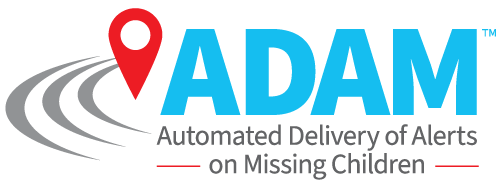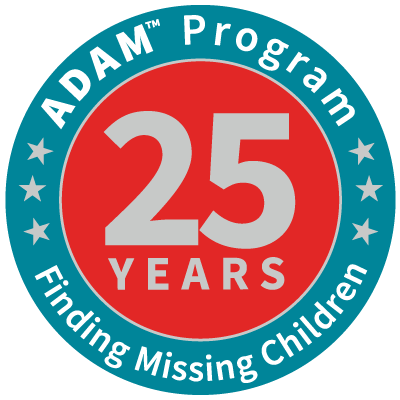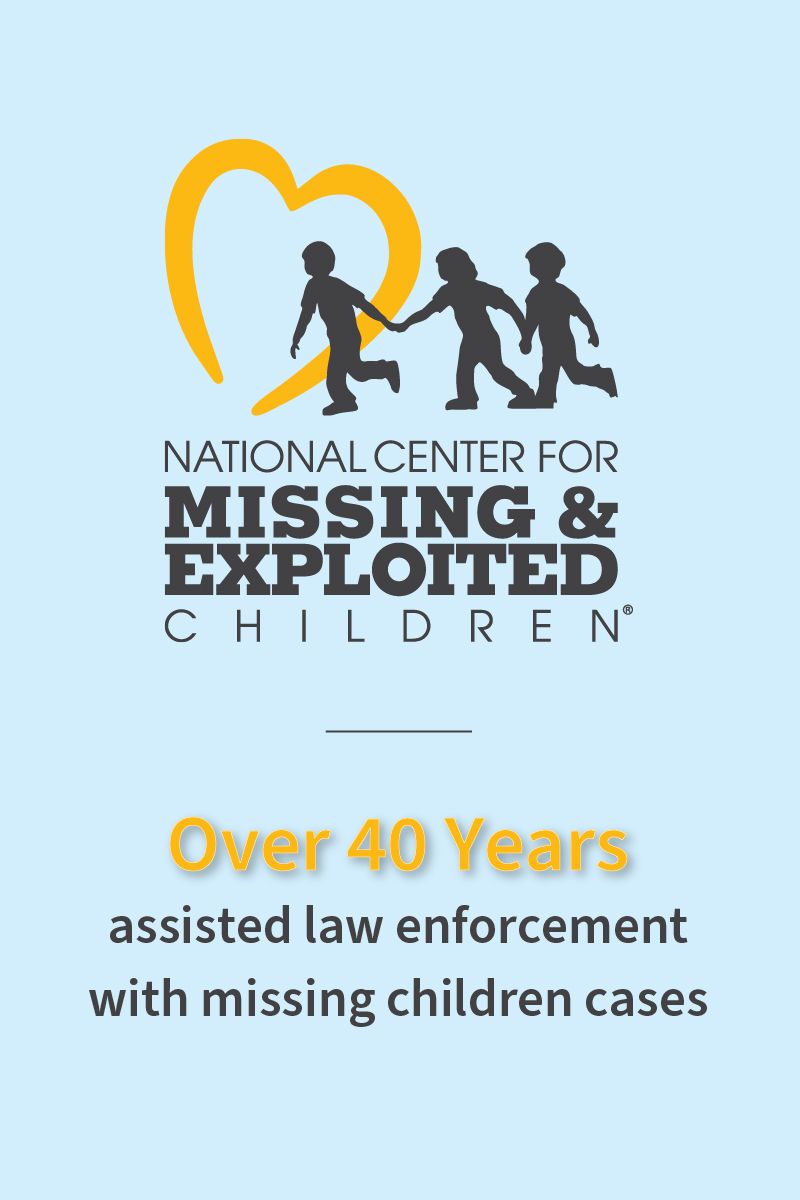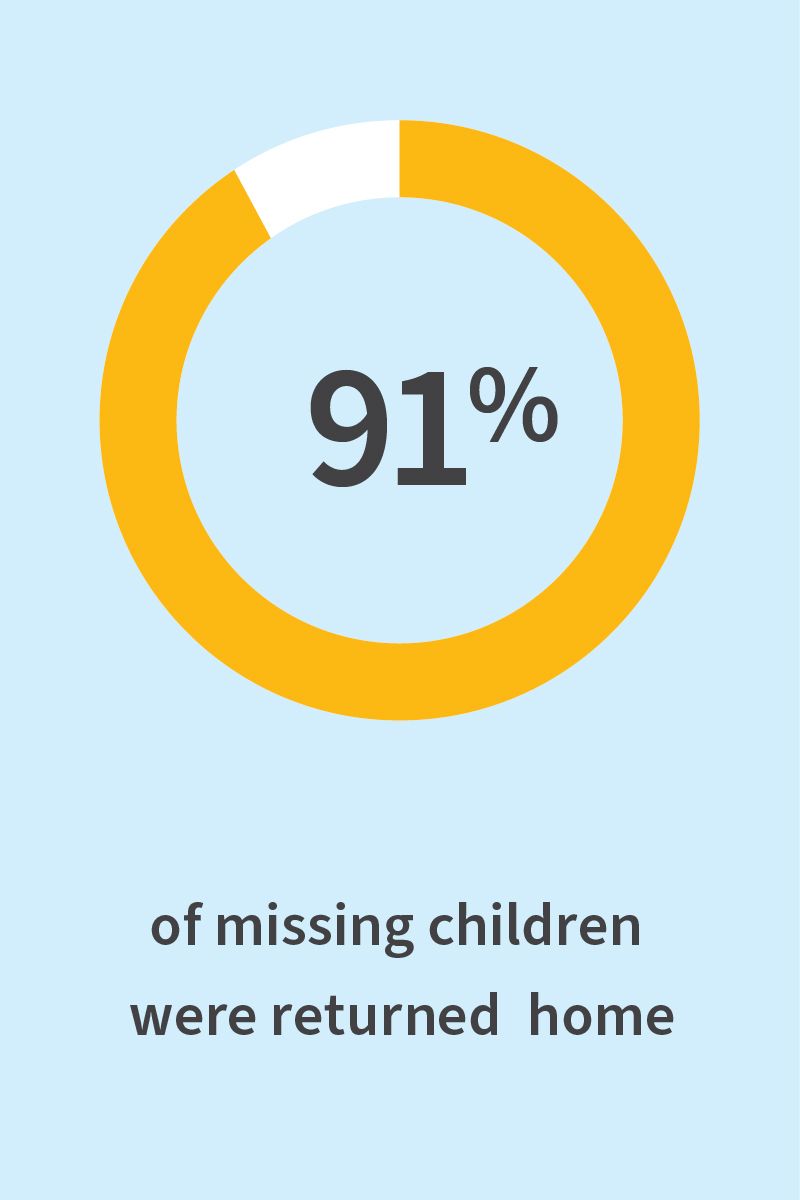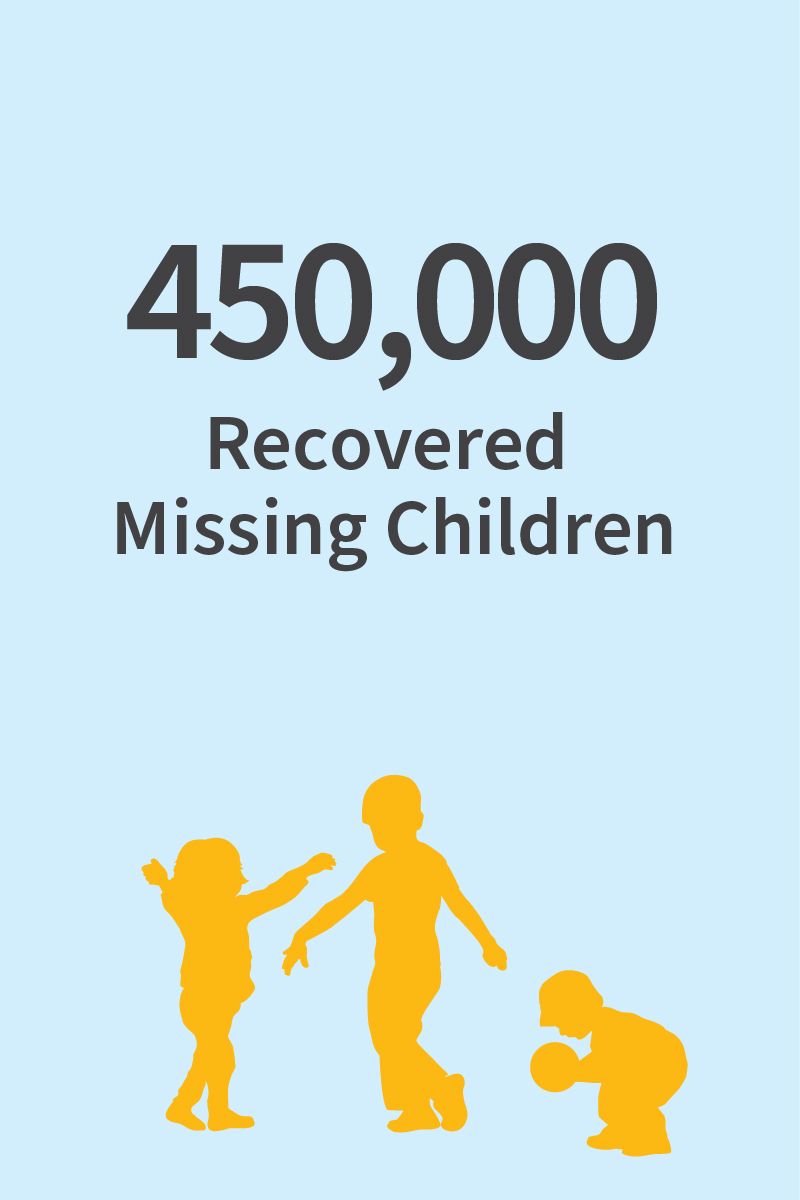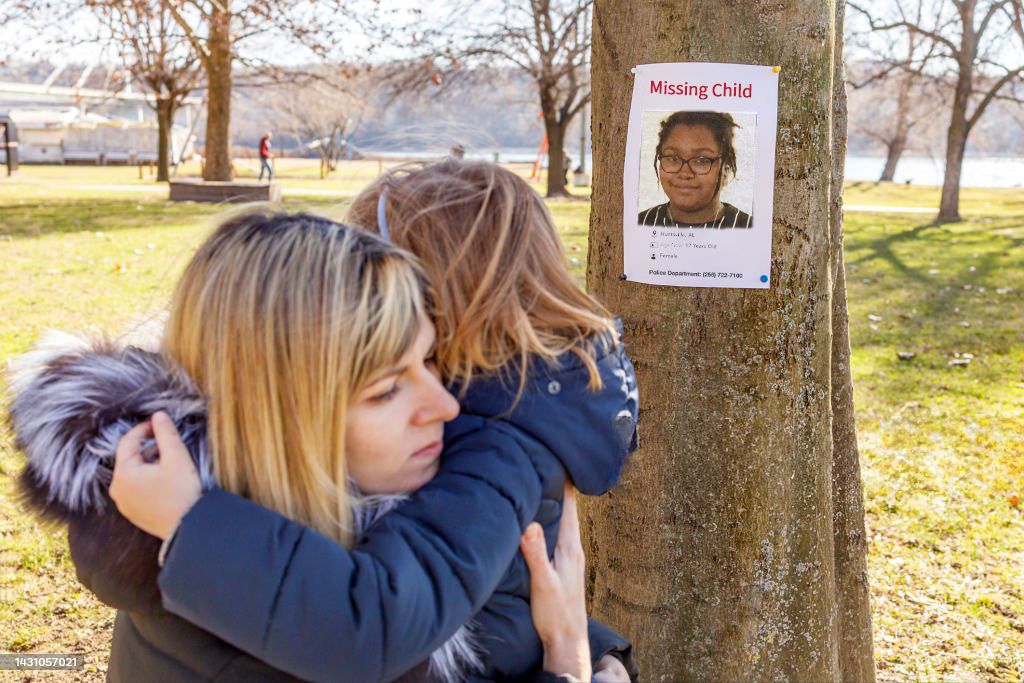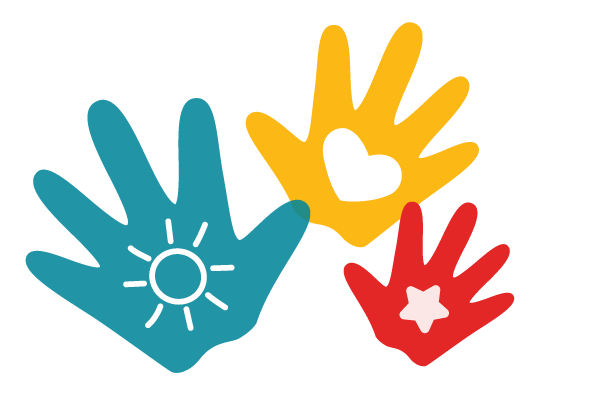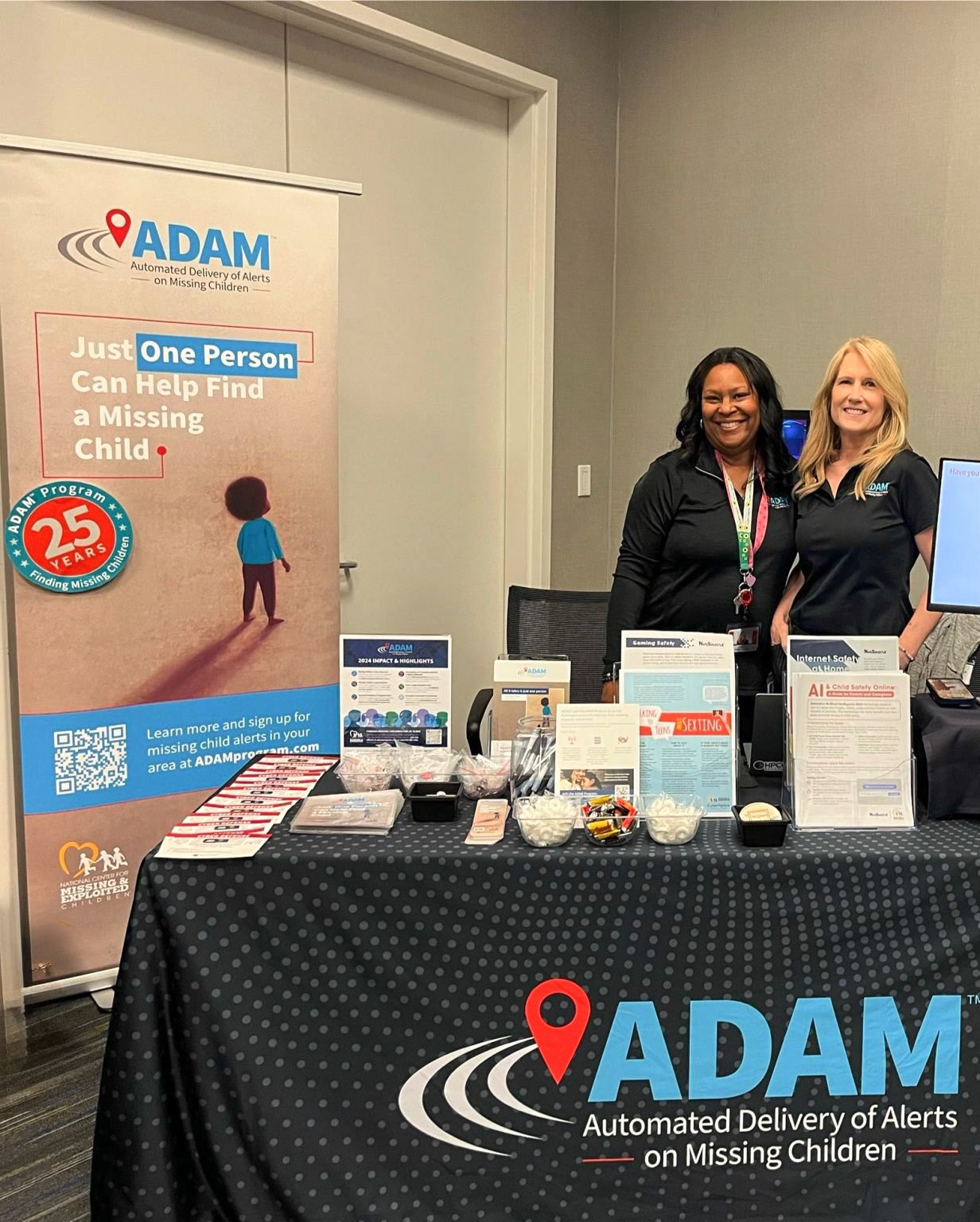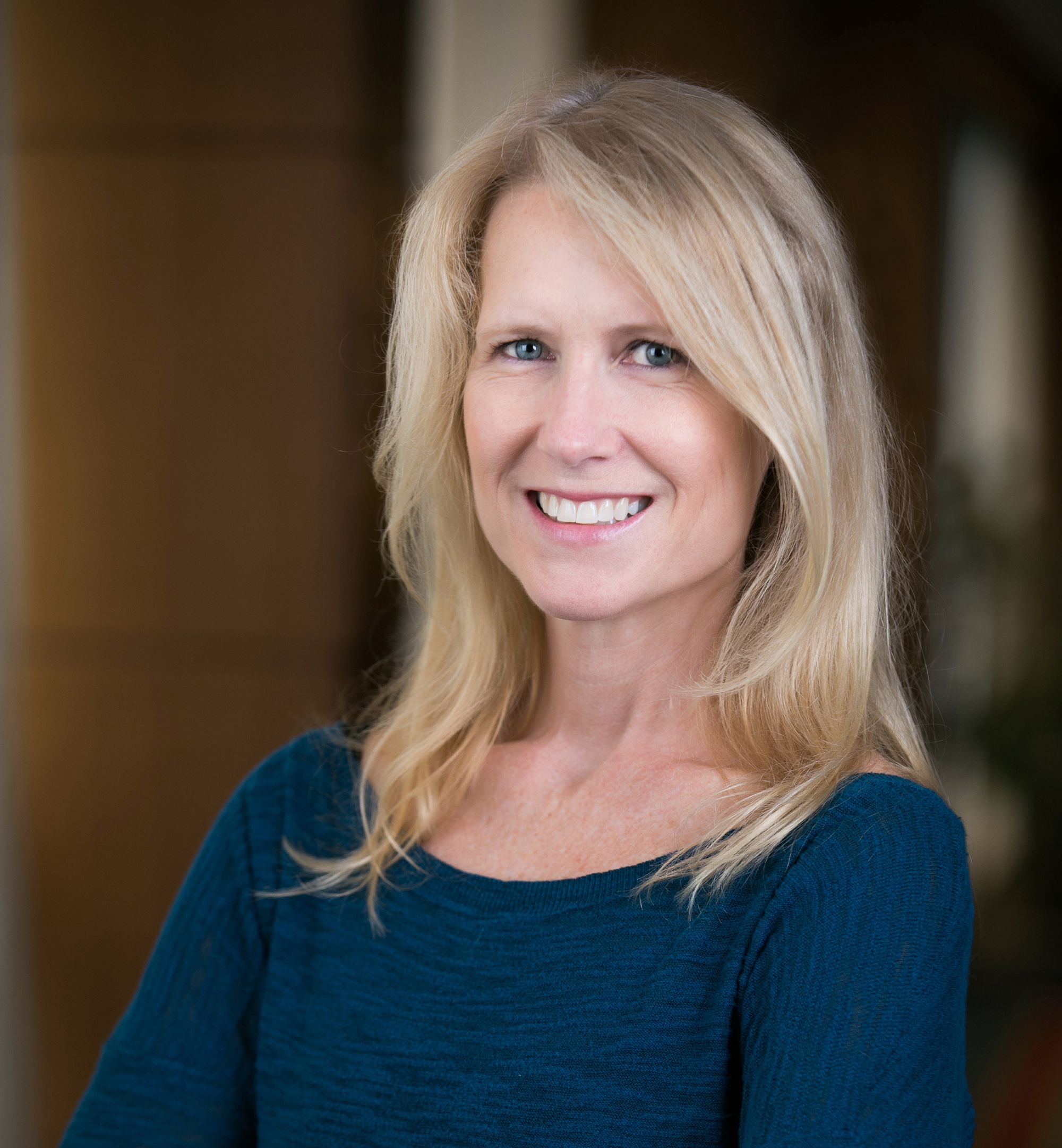The ADAM Program
25 Years of Putting Technology to Use
for the Greatest Good


On July 27, 1981, 6-year-old Adam Walsh walked into a mall department store in Hollywood, Florida, with his mom. While she shopped nearby, he watched a group of older boys play video games in the toy department. When a security guard asked the group to leave, Adam obeyed the request and followed an older boy out of the store. Left alone, he was spotted by a predator who kidnapped and murdered him. Adam’s family launched a national initiative to help find missing children, and many years later, Adam’s killer was identified.
On January 1, 2002, 13-year-old Alicia Kozak walked out the front door of her home in Pittsburgh, Pennsylvania, to meet a boy she’d been talking to online. Instead, a 38-year-old Internet predator who had been pretending to be a boy her age was waiting. He abducted her, drove her to his house in Virginia and held her captive in his basement. During a week of torture, he livestreamed her abuse. Someone who saw the livestream recognized Alicia from her image on a poster and contacted the hotline listed on the poster, allowing the FBI to rescue her.

Underlying these two horrific examples of humanity at its worst is a story of humanity
at its best
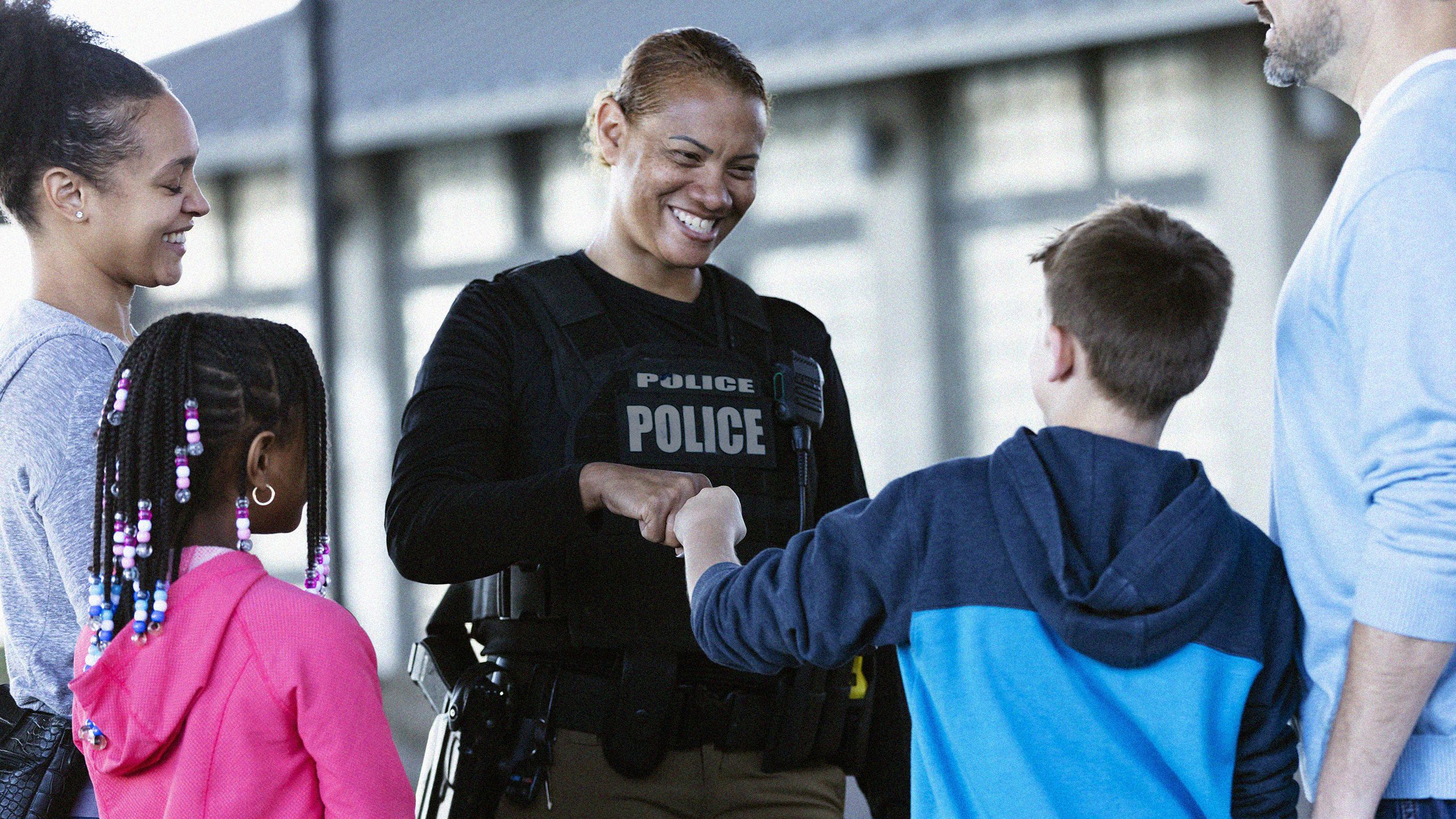

LexisNexis® Risk Solutions Partners with the National Center for Missing & Exploited Children®
Prompted by the murder of their son, Adam, John and Revé Walsh founded the National Center for Missing & Exploited Children (NCMEC) in 1984, an organization that has changed the way the nation — and now the world — deals with missing child cases in terms of protocol and procedures for law enforcement, support for the families of the children and mechanisms for the public to aid in the efforts.
In 2024, NCMEC assisted law enforcement with 29,568 cases of missing children in that year alone, helping to bring 91% of them home. This brings the total number to over 450,000 missing children that NCMEC has helped law enforcement recover in the advocacy group’s first 40 years.
Partnerships


LexisNexis® Risk Solutions is a partner at another level
But they don’t do it alone, says Callahan Walsh, Co-host of America’s Most Wanted and an Executive Director at NCMEC. Callahan is also the younger brother of Adam Walsh. Explaining the importance of strong partnerships with both the public and private sectors, Walsh categorizes LexisNexis Risk Solutions as “a partner on another level.”
“A lot of times, you have a partner that comes in and you see them once a year when they make a very generous donation, and that’s great because we need financial partners. But LexisNexis Risk Solutions provides us not only with financial assistance but also operational assistance with their technology expertise.”
And that’s where the Automated Delivery of Alerts on Missing Children (ADAM) Program comes in. LexisNexis Risk Solutions was already donating technology products to aid NCMEC when employee, Trish McCall, senior director, stepped up to co-found the ADAM Program in 2000 with Patti Willingham, executive director over the Missing Children Division of NCMEC. Named as a tribute to Adam Walsh, the program uses geotargeted technology to quickly distribute missing child posters and case details to police, news media, schools, businesses, medical centers and everyday citizens. This is the same type of missing child poster that led to the rescue of Alicia Kozak. (Today, Alicia is an advocate for internet safety, missing person and child safety legislation. Read about “Alicia’s Law” below.)
In 2024 alone, 1,959 missing child cases were processed through the ADAM Program and more than 1,380 were resolved by photo distribution and other efforts.
“We have a lot of different programs at NCMEC that are all effective in their own way,” explains Walsh. “But the ADAM Program is immediately effective in our mission of finding missing kids.
It directly affects what we set out to tackle 40 years ago when my parents started what was originally called the Adam Walsh Resource Center in our garage on a card table and a landline telephone. It’s a shining example of harnessing the power of technology to bring home children faster than ever before.”
Callahan Walsh
Callahan Walsh
A Picture Really is Worth a Thousand Words

Walsh recalls the early days of NCMEC when there wasn’t much technology, referring to the time as the “milk carton days”— after a dairy farmer started a national movement by putting the faces of missing children on milk cartons. NCMEC adopted the same approach when making the 1983 TV movie, “Adam,” putting missing children’s images in the credits. The technique was so successful in the recovery of children that Walsh says they had to re-edit the ending credits with updates.
We discovered that the most important tool when it comes to the recovery of a missing child is a photo of that child,” he reinforces. “But that photo does no good if it sits on a shelf where no one sees it. So, at that time we were looking for a way to get the images out in front of the public, and LexisNexis Risk Solutions provided the technology to do that in mass.
McCall distinctly remembers that time as well. In fact, November 20, 2000, is etched into her memory because it is the date of the first alert ever issued through the ADAM Program. Just a few months earlier, McCall had been approached by NCMEC because they had a critical need to quickly distribute their posters.
When the program first began, the alerts were sent via fax. “They were doing it manually at the time or occasionally using a system that wasn’t dedicated to them, so it was taking days to get them out. I was given the project and a small team with the end goal to come up with a solution to quickly distribute these posters, since time is of the essence when a child goes missing. We assessed their needs and built a system solely for their use to distribute missing child posters, which include a photo, to targeted recipients within minutes.”
“These posters serve as the voice of the missing child...
The voice calling out for help, saying, 'I’m missing – please bring me home.' ”
— Trish McCall, ADAM Program Co-founder
Over time, innovative features were added to make it easier for NCMEC to circulate these images to more and more people. By 2015, the posters were also being emailed, and today, text message alerts are also an option for bringing in the general population to help in the recovery efforts. A sign-up form is housed on the adamprogram.com website for anyone to sign up and receive alerts in their area so they can play a key part in finding missing children.
McCall credits her company’s commitment to the ADAM Program, which includes strong support from the executive team, as key to making it such a successful initiative.
“Outreach and promotional efforts increase community involvement, leading to thousands of new participants signing up to receive missing child alerts in their area.”
Sharon Vanairsdale, Sr Project Manager with ADAM Program Co-Founders Patti Willingham and Trish McCall
Sharon Vanairsdale, Sr Project Manager with ADAM Program Co-Founders Patti Willingham and Trish McCall
Alesha Mosley-Jiggetts, AVP, Technology Optimization, Applied AI & Cloud Engineering with ADAM Program Co-Founder, Trish McCall, LexisNexis Risk Solutions
Alesha Mosley-Jiggetts, AVP, Technology Optimization, Applied AI & Cloud Engineering with ADAM Program Co-Founder, Trish McCall, LexisNexis Risk Solutions
Easy Equals Effective with Interactive Dashboard
As the ADAM Program marks its 25th year, the teams behind the program are doubling down on their commitment to help find missing children. In fact, the recent launch of the interactive missing children dashboard has significantly extended the reach of the program.
Now, instead of the posters reaching only the people who have signed up to receive alerts, anyone, anywhere, anytime can access the dashboard and view a map of the U.S. representing all the missing children that NCMEC is using the ADAM Program for photo distribution. And from there, you can click on a specific poster to view it on the NCMEC website and easily share it through social channels and email. Another feature is that you can search on any geographic area; so, if you’re traveling, the dashboard offers many different views to drill down and filter on missing children in any particular area.
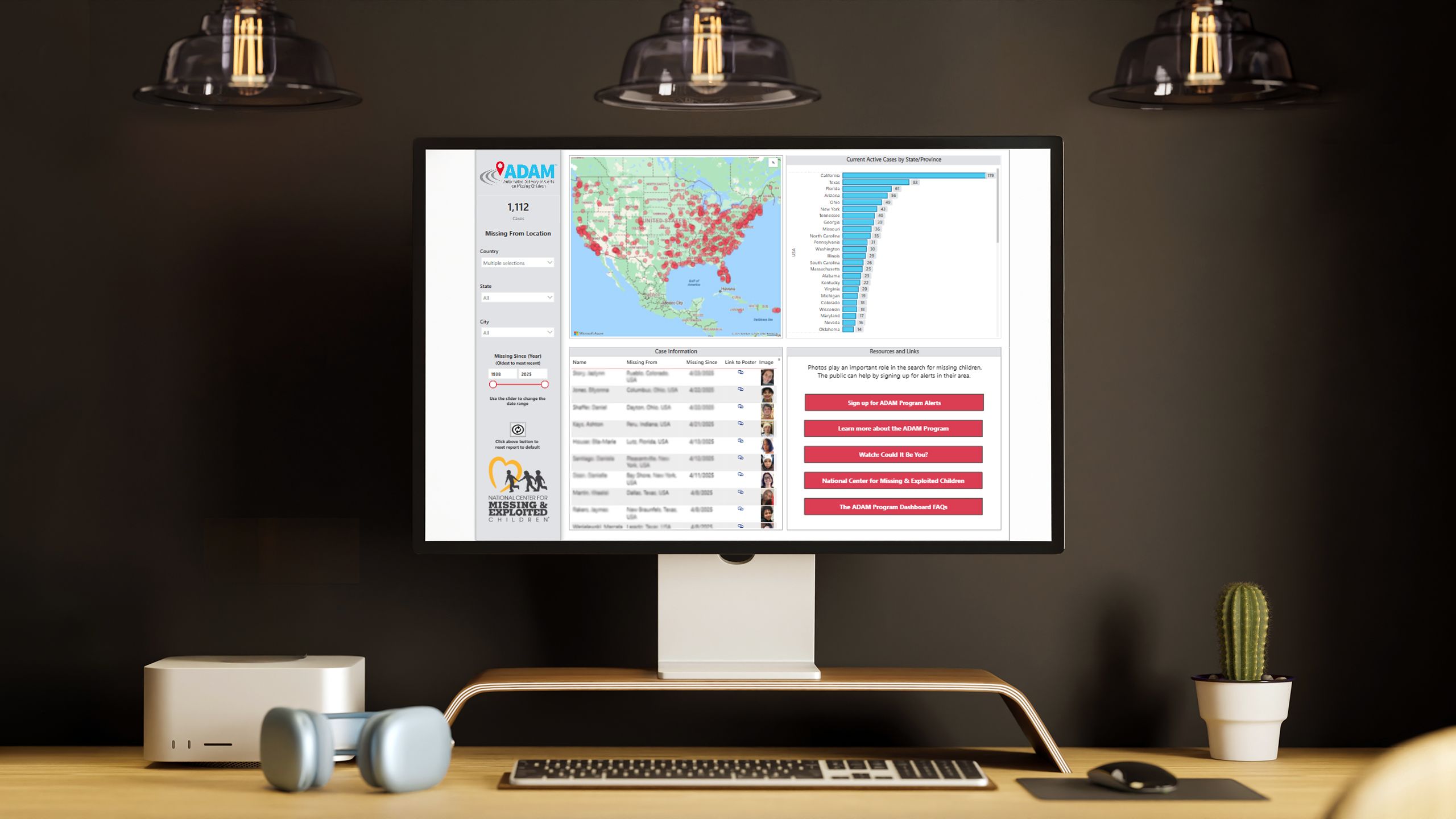
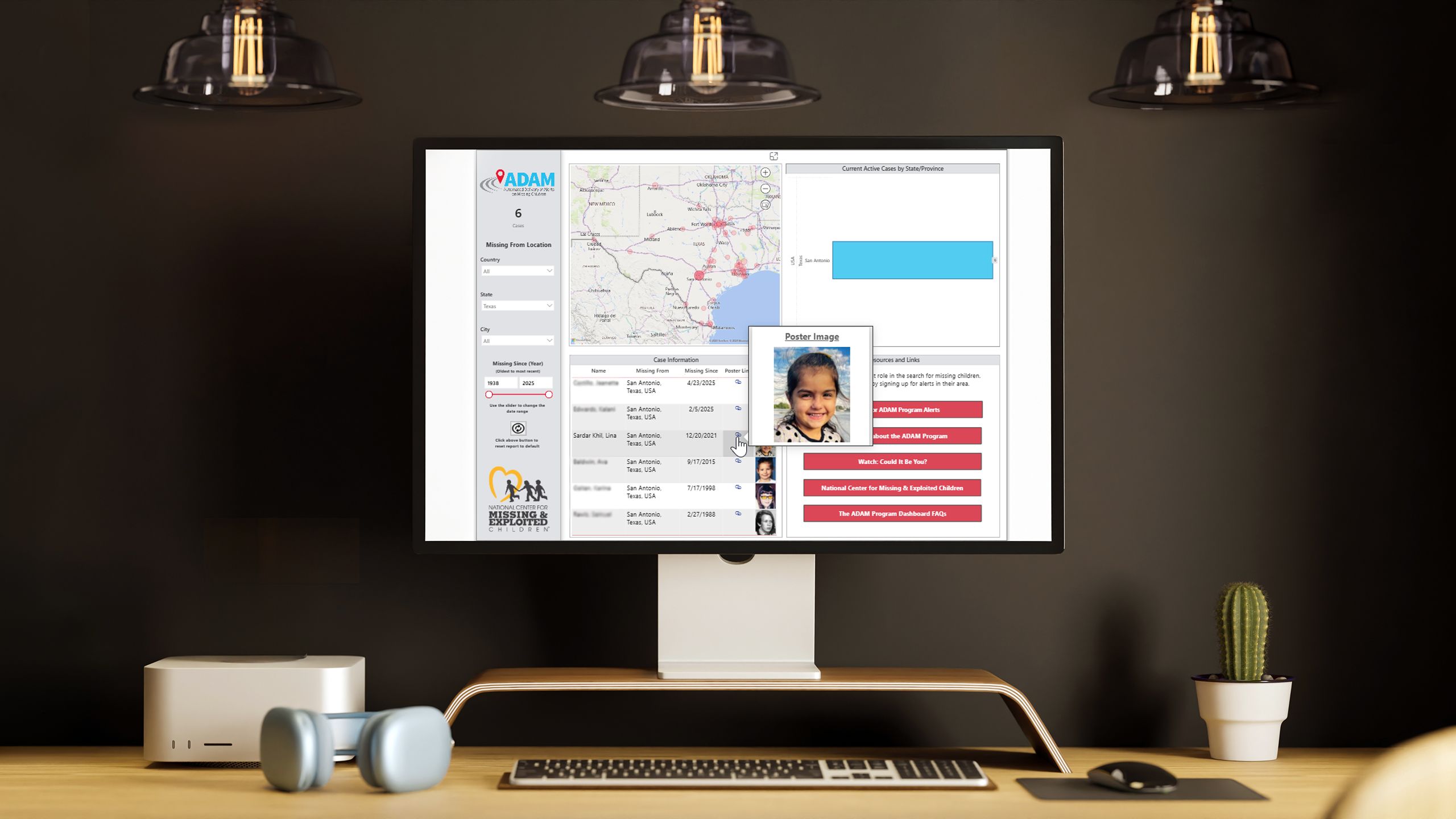
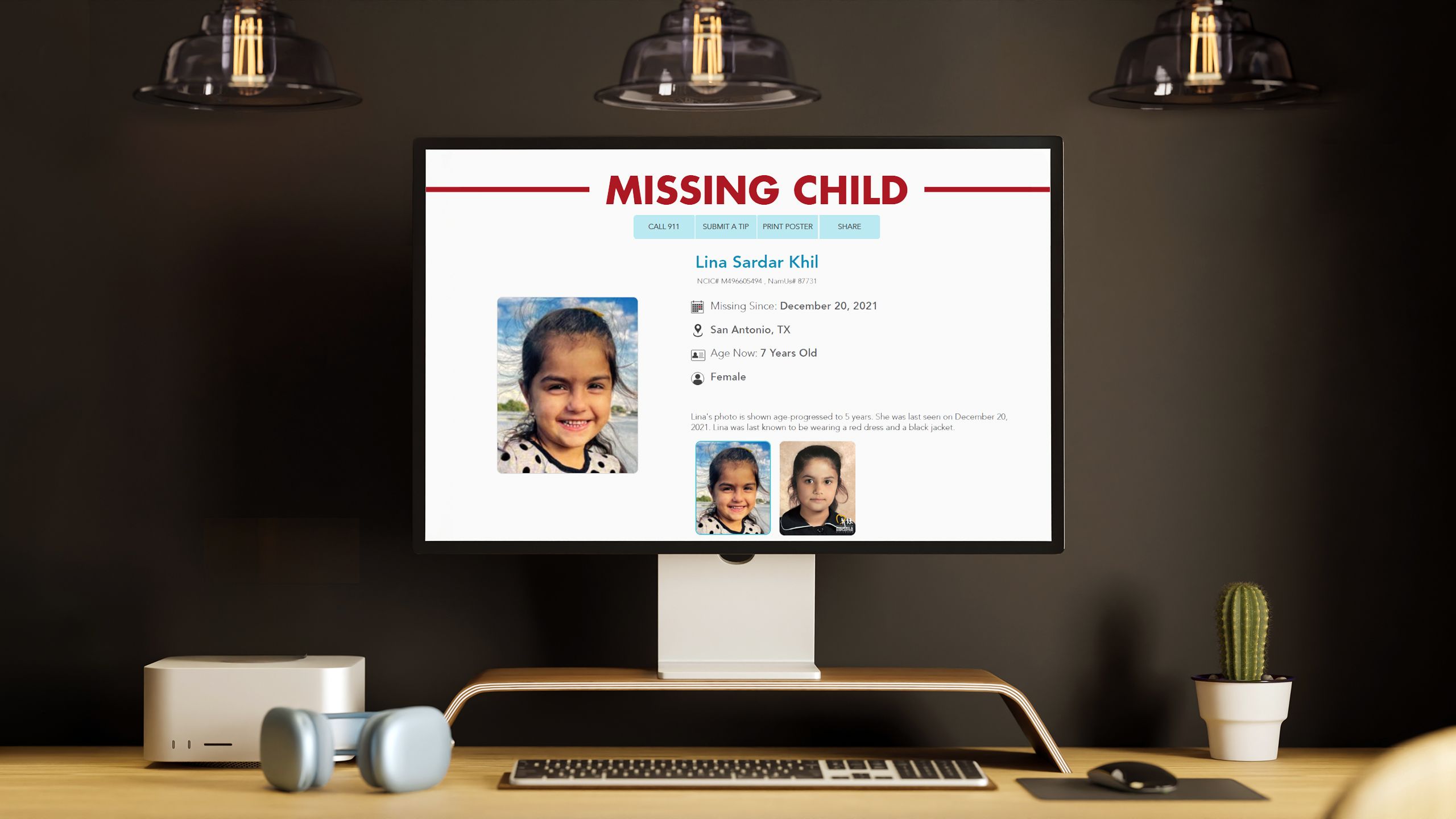
The dashboard puts the ADAM Program in the hands of everybody and makes it really easy for all of us to play a critical role in the recovery efforts,” explains McCall, who credits her colleague Robin Campbell as the technologist who brought her vision to life.
Campbell, an Air Force veteran who has worked at LexisNexis Risk Solutions for a decade, is an expert in data visualization and recognized the potential power of making the ADAM Program more visible right away.
Robin Campbell, Senior Project Manager in the Applied AI & Cloud Engineering organization at LexisNexis Risk Solutions
Robin Campbell, Senior Project Manager in the Applied AI & Cloud Engineering organization at LexisNexis Risk Solutions
“Our goal was to make robust changes to the platform that included creating a visual that depicted all of the missing kids in the ADAM Program,” states Campbell, a senior project manager in the Applied AI & Cloud Engineering (ACE) organization at LexisNexis Risk Solutions. “We’ve created a way to use the technology that we built for our everyday business and use it in a way that gives back to the community. I’m so grateful for the opportunity to contribute to the ADAM Program and use the technology for such good. You can’t help but feel that it’s personal.”
For Walsh, he points out that the ADAM Program has always tried to have a very low threshold, and that keeping it that way through upgrades like a nimble and agile dashboard that allows users to customize their experience is how the program will be the most successful.
“Any time that you can make technology easier for individuals to onboard makes things much more effective in the long run,” he submits. “We want to make sure that all businesses and the public can easily access the ADAM Program, easily get these alerts, easily make sure that the alerts are geotargeted and make sense where they are geographically.
Meeting Today’s Challenges
As technologies have advanced, the work by LexisNexis Risk Solutions has positioned the ADAM Program to adapt to the modern era.
“The world’s population has stabilized but child trafficking is at an all-time high, and the United States is not immune to that,” says U.S. Congressman Rich McCormick of Georgia’s 7th District. “And as an ER doctor, I’ve seen some horrific things. When you lose a patient in an ER who is a child, you never forget.”
“We need more measures to protect children — and this is a bipartisan issue.”
After recently learning about the ADAM Program and the extensive support that LexisNexis Risk Solutions provides to NCMEC, Rep. McCormick applauds this model of how private and public sectors can work together to make a substantial difference. He also looks forward to getting involved in helping to sponsor legislation as a member of the Committee on Science, Space and Technology and is a proponent of introducing digital IDs for children on a voluntary basis as an effective tool in keeping them safe.
U.S. Congressman Rich McCormick of Georgia’s 7th District
U.S. Congressman Rich McCormick of Georgia’s 7th District
Reducing bias is another important factor in the cases of missing children that technology can help remedy, according to Walsh.
“We know that black and brown children aren’t featured as often in traditional media settings as your blonde-haired, blue-eyed kid. Through the ADAM Program, we can make sure that underserved children get the attention they deserve by making sure they are seen by the public, so their recovery effort can start immediately."
The ADAM Program also addresses the issue of privacy, adds Walsh. He explains that the technology from LexisNexis Risk Solutions not only distributes the images at the click of a button, but it’s also able to reverse that machine to quickly take down the images so the family has the privacy they need once the child has been recovered. “While it’s the end of a news cycle when a missing child is found, it’s not the end of the chapter for the family. They have a long road to recovery and part of that recovery comes from privacy.”
The ADAM Program: What It Means to Me
Trish McCall
The ADAM Program is all about hope. It gives hope to parents of missing kids, and it gives one way for the community to get involved and do what they can to help bring missing children home to reunite families. That’s why it’s so important that we always make it the best that it can be and why it has become a part of me.
And I know this program works. Over 94% of the missing children cases distributed through the ADAM Program since its inception in 2000, are now resolved through photo distribution or other efforts, and we celebrate each one. One success story that I love to share is about a mother whose five children were missing for nine long months. They were found in just nine days after the ADAM Program alert was distributed to specific areas in a small town. Her story is our 'why'.
Callahan Walsh
It means everything to me to continue this mission in Adam’s legacy. I grew up in a family tragedy where I had an older brother who I never met because he was abducted and murdered before I was born. But I always knew about Adam because we celebrated that little boy’s life. I knew his favorite sport was baseball and his favorite movie was Star Wars. I always knew I had this brother because I watched my parents channel their emotions and their anger and their energy over what happened to Adam to make sure that he didn’t die in vain. I grew up in a house where my parents said: If Adam’s song is to continue, then we must do the singing. And I try to do that singing every day, whether it’s working with partners to create programs like the ADAM Program or following my father’s footsteps to help catch the bad guys.
US Rep Rich McCormick (GA-7)
Anybody who has children knows that losing your child and having to think about their fate is the worst-case scenario. As parents, the fear that we all have since the day our child is born is that something bad could happen to them. And so, to have the ADAM Program that we can all participate in is of vital importance. Children are the innocent of us, and we're charged to protect them not only from a religious standpoint but also from a moral, ethical and humanistic standpoint.
Automated Delivery of Alerts on Missing Children
The ADAM Program relies heavily on public support and community participation to bring more missing children home.
Find out how you can help at adamprogram.com.
